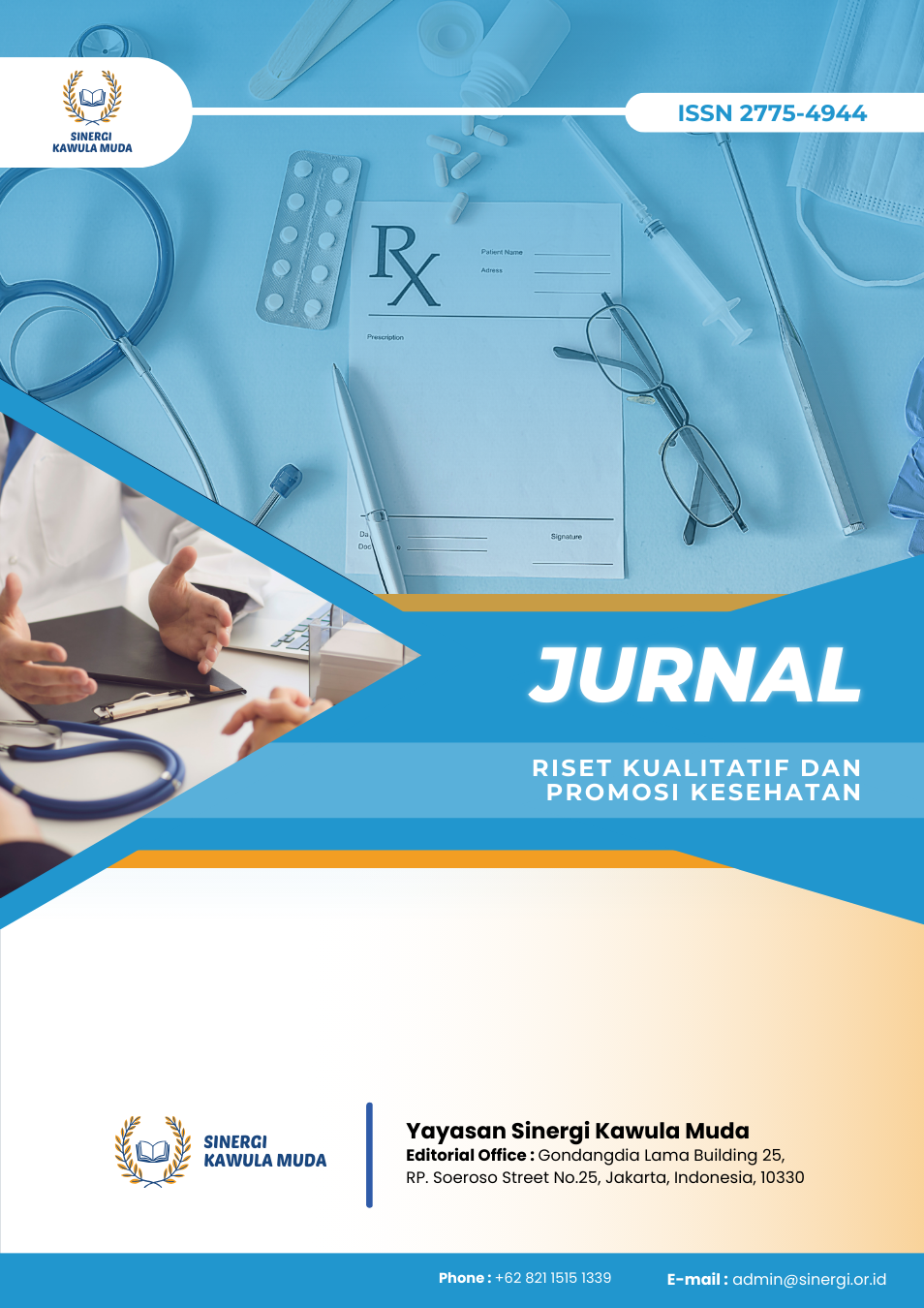Climate Change, Urbanization, and Zoonotic Diseases: A Narrative Review for Public Health Resilience
DOI:
https://doi.org/10.61194/jrkpk.v3i1.671Keywords:
Climate Change, Zoonotic Diseases, Urbanization, Vector Ecology, Public Health, One Health, Environmental GovernanceAbstract
Climate change and urbanization are intensifying the emergence of zoonotic diseases, posing urgent challenges to public health systems—particularly in rapidly growing urban areas. This narrative review examines the interplay between climate variability, environmental change, and zoonotic disease transmission, focusing on temperature shifts, precipitation patterns, and urban land-use dynamics. A systematic literature review was conducted to synthesize empirical studies across diverse climatic and urban contexts. Findings reveal that rising temperatures accelerate pathogen replication and expand vector habitats, while altered rainfall patterns increase the likelihood of waterborne and vector-borne disease outbreaks. Urbanization-induced deforestation, habitat fragmentation, and inadequate infrastructure further heighten human-wildlife interactions and disease spillovers. Vulnerabilities are exacerbated in low-income communities with limited access to sanitation, healthcare, and early warning systems. This review highlights the urgent need for integrative public health strategies and climate-adaptive urban planning to mitigate zoonotic risks. Policymakers must prioritize early surveillance, equitable health access, and ecosystem-sensitive development. By adopting the One Health framework and strengthening interdisciplinary collaboration, cities can build resilience to future zoonotic threats in the context of accelerating climate change.
References
Jones BA, Grace D, Kock R, Alonso S, Rushton J, Said MY, et al. Zoonosis Emergence Linked to Agricultural Intensification and Environmental Change. Proceedings of the National Academy of Sciences. 2013;110(21):8399–404.
Rahman MdT, Sobur MdA, Islam MdS, Ievy S, Hossain MdJ, Zowalaty MEE, et al. Zoonotic Diseases: Etiology, Impact, and Control. Microorganisms. 2020;8(9):1405.
Castonguay AC, Chowdhury S, Shanta IS, Schrijver B, Schrijver R, Wang S, et al. A Generalizable Prioritization Protocol for Climate-Sensitive Zoonotic Diseases. Trop Med Infect Dis. 2024;9(8):188.
Tian H, Yu PB, Cazelles B, Xu L, Tan H, Yang J, et al. Interannual Cycles of Hantaan Virus Outbreaks at the Human–animal Interface in Central China Are Controlled by Temperature and Rainfall. Proceedings of the National Academy of Sciences. 2017;114(30):8041–6.
Bartlow AW, Manore CA, Xu C, Kaufeld K, Valle SYD, Ziemann A, et al. Forecasting Zoonotic Infectious Disease Response to Climate Change: Mosquito Vectors and a Changing Environment. Vet Sci. 2019;6(2):40.
Zhang L, Zhang C, Li K, Zhang Y. Longitudinal Qualitative Study on the Psychological Experiences of COVID-19 Patients Based on Timing It Right Framework. Sci Rep. 2024;14(1).
Hassett E, Thangamani S. Ecology of Powassan Virus in the United States. Microorganisms. 2021;9(11):2317.
Edward M, Heniedy AM, Saminu A, Mary JJF, Ahmed D, Engmann ST, et al. Climate Change and Contagion: The Emerging Threat of Zoonotic Diseases in Africa. Infect Ecol Epidemiol. 2024;15(1).
Braam D, Chandio R, Jephcott FL, Tasker A, Wood JLN. Disaster Displacement and Zoonotic Disease Dynamics: The Impact of Structural and Chronic Drivers in Sindh, Pakistan. Plos Global Public Health. 2021;1(12):e0000068.
Meadows AJ, Stephenson N, Madhav N, Oppenheim B. Historical Trends Demonstrate a Pattern of Increasingly Frequent and Severe Spillover Events of High-Consequence Zoonotic Viruses. BMJ Glob Health. 2023;8(11):e012026.
Mather S, Scott SD, Temperton N, Wright E, King B, Daly JM. Current Progress With Serological Assays for Exotic Emerging/Re-Emerging Viruses. Future Virol. 2013;8(8):745–55.
Jánová E. Emerging and Threatening Vector-Borne Zoonoses in the World and in Europe: A Brief Update. Pathog Glob Health. 2019;113(2):49–57.
Keatts L, Robards MD, Olson SH, Hueffer K, Insley SJ, Joly DO, et al. Implications of Zoonoses From Hunting and Use of Wildlife in North American Arctic and Boreal Biomes: Pandemic Potential, Monitoring, and Mitigation. Front Public Health. 2021;9.
Glidden CK, Murran AR, Silva RA, Castellanos AA, Han BA, Mordecai EA. Phylogenetic and Biogeographical Traits Predict Unrecognized Hosts of Zoonotic Leishmaniasis. PLoS Negl Trop Dis. 2023;17(5):e0010879.
Lodge EK, Schatz AM, Drake JM. Protective Population Behavior Change in Outbreaks of Emerging Infectious Disease. BMC Infect Dis. 2021;21(1).
Gardner E, Kelton DF, Poljak Z, Kerkhove MD V, Dobschuetz S v., Greer AL. A Case-Crossover Analysis of the Impact of Weather on Primary Cases of Middle East Respiratory Syndrome. BMC Infect Dis. 2019;19(1).
Hamlet A, Gaythorpe KAM, Garske T, Ferguson NM. Seasonal and Inter-Annual Drivers of Yellow Fever Transmission in South America. PLoS Negl Trop Dis. 2021;15(1):e0008974.
Singh N, Ogunseitan OA, Tang Y. Medical Waste: Current Challenges and Future Opportunities for Sustainable Management. Crit Rev Environ Sci Technol. 2021;52(11):2000–22.
Ouma FF, Mulambalah CS. Persistence and Changing Distribution of Leishmaniases in Kenya Require a Paradigm Shift. J Parasitol Res. 2021;2021:1–6.
Jagadesh S, Combe M, Gozlan RE. Human-Altered Landscapes and Climate to Predict Human Infectious Disease Hotspots. Trop Med Infect Dis. 2022;7(7):124.
Zhang X, Wu Y, Miao L. Study on the Effects of Individualized Nutritional Intervention on Pregnancy Outcome and Neonatal Immune Function in Patients With Gestational Diabetes Mellitus. Biomed Res Int. 2022;2022(1).
García‐Peña GE, Rubio A V, Mendoza H, Fernández M, Milholland MT, Aguirre AA, et al. Land-Use Change and Rodent-Borne Diseases: Hazards on the Shared Socioeconomic Pathways. Philosophical Transactions of the Royal Society B Biological Sciences. 2021;376(1837):20200362.
Braam D. Zoonoses in the Margins: Environmental Displacement and Health Outcomes in the Indus Delta. Int J Equity Health. 2022;21(1).
Downloads
Published
Issue
Section
License
Copyright (c) 2025 Jurnal Riset Kualitatif dan Promosi Kesehatan

This work is licensed under a Creative Commons Attribution 4.0 International License.





